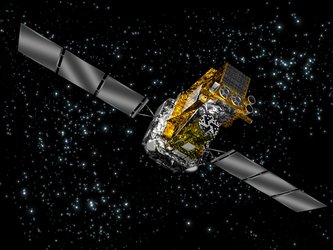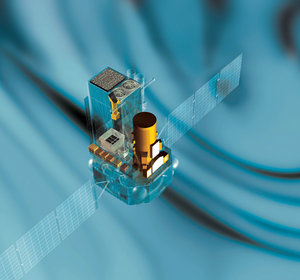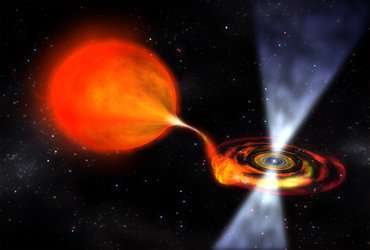8 - 10 October
Integral ground segment declared ready
The last Integral simulation was successfully completed at the European Space Operations Centre (ESOC) in Germany on 10 October 2002. Integral’s Mission Operation Control ground segment has been tested and validated in systems validation and mission readiness tests, and altogether 34 simulations, for a total of 300 hours, have been carried out.
Simulation tests covered the critical launch and early orbit phase, commission phase and routine phase activities as well as appropriate contingency recovery operations. The results showed that mission operations staff are fully trained and ready, and that the entire ‘people/machines/procedures’ system is able to execute reliably and correctly all planned Integral operations within the given time constraints.
The Integral Mission Operation Control (MOC) ground segment consists of:
- the MOC at ESOC with its mission operations control facilities
- the ground stations Redu in Belgium, Goldstone (DSS16) in California USA, Vilspa 2 in Spain and Perth, Australia
- the communication systems connecting the MOC with supporting ground stations and with the Integral Science Data Centre and the Integral Science Operation Centre
- the operational documentation for the satellite, flight dynamics and supporting ground facilities
- the databases for telemetry, telecomand, tracking, flight dynamics and ground facilities

Rollout of the Space Head Unit
The Space Head Unit (made up of the Integral satellite, separation systems, adaptors, fairing and Proton upper stage), was rolled out on 10 October at 10:15 Baikonur time to begin its short journey to the Launcher Integration Building about 500 m away. As always with a fuelled satellite and an upper stage, stringent safety precautions were implemented and the fire brigade and ambulance were present.

A locomotive pulled the railcar with the Space Head Unit (SHU)into the building. Once the locomotive had exited from the other side of the building the SHU was lifted into position for mating with the first three stages of the Proton.
Once mated, ESA and Alenia engineers verified the correct electrical continuity between the upper stage and the bottom of the Proton rocket. This connection will be used later on the pad to communicate with the satellite prior to liftoff. A test of the upper stage battery was also carried and proved successful.
8 October

Final Space Head Unit operations
Now that the Integral satellite is inside the fairing, the Proton launch authorities are driving the schedule of activities, according to their proven record of timely launches.
On 5 October, final operations were carried out on the fairing. This includes mechanical operations such as filling up access holes, fixing venting ports and some electrical checks.

The Integral logo, brought over from ESTEC, was fixed on 7 October. The exact location of the logo generated a heated debate among the team. The logo should first fit on the fairing, be seen during transportation of the space head to the launcher and of course be visible on the launch pad, before lift off, from the observation point. After some discussion, lead ESA launcher interface engineer Barrie Henson found a suitable compromise with our Russian partners.

Once complete, the space head unit was lifted on 8 October by 2 cranes and loaded on a railcar, for transport to the Launcher Integration Building.
The Space Head will now leave the main spacecraft integration building (building 92A-50) where the Integral team has its offices. The team will now have to split into 3 groups. One group will follow the activities in the Launcher Integration building (building 92-1).

Others will start preparations in the launch pad and bunker (launch complex 200), while the packing team will remain here to start moving equipment back into their boxes and into sea containers for the return trip. It will be again a busy time in Baikonur.
Note: We have had the pleasure of welcoming Stephane Corvaja, our official ESA photographer.

















